
漢德百科全書 | 汉德百科全书


 Architektur
Architektur
 Neobyzantinische Architektur
Neobyzantinische Architektur
 Architektur der Renaissance
Architektur der Renaissance
 Russische Renaissance
Russische Renaissance

 Geschichte
Geschichte
 M 1500 - 2000 nach Christus
M 1500 - 2000 nach Christus

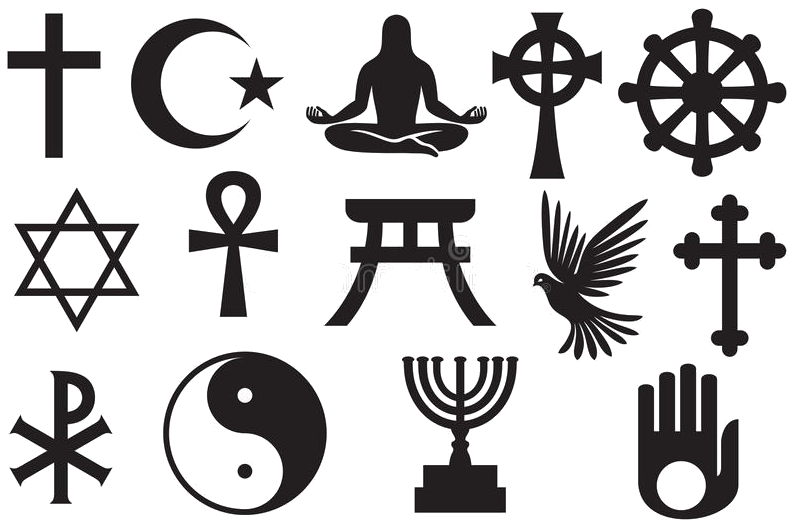 Religion
Religion
 Russland
Russland

 Weltkulturerbe
Weltkulturerbe
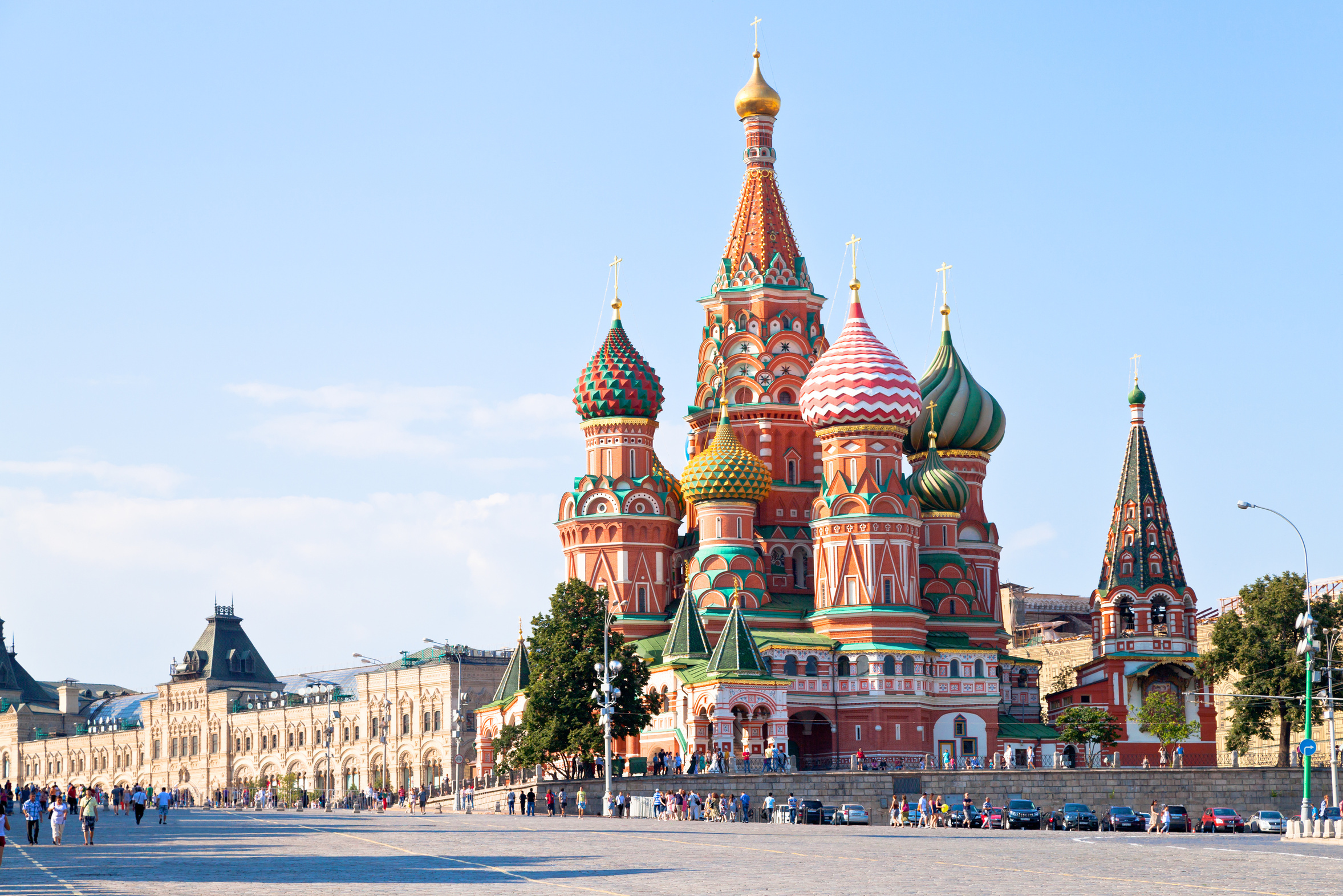
聖ワシリイ大聖堂(露:Собор Василия Блаженного)はロシアの首都、モスクワの赤の広場に立つロシア正教会の大聖堂。正式名称は「堀の生神女庇護大聖堂」(Собор Покрова, что на Рву、詳細は#名称・記憶を参照)。
「聖ワシリー大聖堂」「聖ヴァシーリー大聖堂」「聖ワシーリー寺院」とも日本では表記される。
1551年から1560年にかけて、イヴァン4世(雷帝)が、カザン・ハーンを捕虜とし勝利したことを記念して建立した。ロシアの聖堂でもっとも美しい建物のひとつと言われる。1990年にユネスコの世界遺産に登録された。
ゲームソフト等で有名なテトリスでは、ロシア文化をイメージとした背景や音楽等がよく用いられており、聖ワシリイ大聖堂もしばしば背景画像やパッケージとして使われている。
「クレムリンの聖ワシリイ大聖堂」といった説明がされることもあるが、大聖堂はクレムリンの城壁の内側には位置していないため誤りである。聖ワシリイ大聖堂が位置する赤の広場はクレムリンの城壁の外側にある。
The Cathedral of Vasily the Blessed (Russian: собо́р Васи́лия Блаже́нного, Sobor Vasiliya Blazhennogo), commonly known as Saint Basil's Cathedral, is an Orthodox church in Red Square of Moscow, and is one of the most popular cultural symbols of Russia. The building, now a museum, is officially known as the Cathedral of the Intercession of the Most Holy Theotokos on the Moat, or Pokrovsky Cathedral.[5] It was built from 1555 to 1561 on orders from Ivan the Terrible and commemorates the capture of Kazan and Astrakhan. It was the city's tallest building until the completion of the Ivan the Great Bell Tower in 1600.[6]
The original building, known as Trinity Church and later Trinity Cathedral, contained eight chapels arranged around a ninth, central chapel dedicated to the Intercession; a tenth chapel was erected in 1588 over the grave of the venerated local saint Vasily (Basil). In the 16th and 17th centuries, the church, perceived (as with all churches in Byzantine Christianity) as the earthly symbol of the Heavenly City,[7] was popularly known as the "Jerusalem" and served as an allegory of the Jerusalem Temple in the annual Palm Sunday parade attended by the Patriarch of Moscow and the Tsar.[8]
The cathedral has nine domes (each one corresponding to a different church) and is shaped like the flame of a bonfire rising into the sky,[9] a design that has no parallel in Russian architecture. Dmitry Shvidkovsky, in his book Russian Architecture and the West, states that "it is like no other Russian building. Nothing similar can be found in the entire millennium of Byzantine tradition from the fifth to the fifteenth century ... a strangeness that astonishes by its unexpectedness, complexity and dazzling interleaving of the manifold details of its design."[10] The cathedral foreshadowed the climax of Russian national architecture in the 17th century.[11]
La cattedrale dell'Intercessione della Madre di Gesù sul Fossato, popolarmente nota come cattedrale di San Basilio, è una cattedrale della Chiesa ortodossa russa eretta sulla Piazza Rossa di Mosca tra il 1555 e il 1561 (XVI). Costruita per volontà di Ivan IV di Russia per commemorare la presa di Kazan' e Astrachan', essa rappresenta il centro geometrico della città e il fulcro della sua crescita già dal XIV secolo.[1] È stato il più alto edificio della città di Mosca fino al completamento della Grande Torre Campanaria di Ivan il Grande, avvenuto nel 1600.[2]
L'edificio originale, noto come la chiesa della Trinità e successivamente come cattedrale della Trinità, constava di otto chiese laterali distribuite intorno alla nona, centrale, chiesa dell'Intercessione; la decima chiesa venne eretta nel 1588 sopra la tomba del venerato stolto Basilio il Benedetto. Durante il XVI e il XVII secolo la cattedrale, percepita come il simbolo in terra della Città celeste,[3] era popolarmente conosciuta come Gerusalemme e rappresentava un'allegoria del Tempio di Gerusalemme durante l'annuale parata della Domenica delle Palme capeggiata dal Patriarca di Mosca e dallo zar.[4]
Il disegno dell'edificio, la cui forma ricorda «le fiamme di un falò che sale verso il cielo»,[5] non ha analoghi nell'architettura russa: «Non è come nessun altro edificio russo. Niente di simile può essere trovato nell'intero millennio di tradizione bizantina intercorso tra il V e il XV secolo… una stranezza che lascia attoniti per l'imprevedibilità, la complessità e l'abbagliante fioritura dei dettagli riprodotti nel suo disegno.»[6] La cattedrale anticipò la climax dell'architettura nazionale russa del XVII secolo,[7] ma non è mai stata riprodotta direttamente.
La cattedrale ha operato come divisione del Museo Storico di Stato già dal 1928. Venne completamente secolarizzata nel 1929 e, al 2009, risulta ancora proprietà della Federazione russa. La cattedrale è inclusa dal 1990 come Patrimonio dell'umanità nella lista UNESCO, insieme con il Cremlino di Mosca.[8]
La Catedral de la Intercesión de la Santísima Virgen en el Montículo (en ruso Собор Покрова Пресвятой Богородицы, что на Рву, Sobor Pokrová Presvyatoy Bogoróditsy, chto na Rvu), más conocida como Catedral de San Basilio, es un templo ortodoxo localizado en la Plaza Roja de la ciudad de Moscú, Rusia. Es mundialmente famosa por sus cúpulas en forma de bulbo. A pesar de lo que se suele pensar popularmente, la Catedral de San Basilio no es ni la sede del Patriarca Ortodoxo de Moscú, ni la catedral principal de la capital rusa, pues en ambos casos es la Catedral de Cristo Salvador. Como parte de la Plaza Roja, la catedral de San Basilio fue incluida desde 1990, junto con el conjunto del Kremlin, en la lista de Patrimonio de la Humanidad de Unesco.2
La construcción de la catedral fue ordenada por el zar Iván el Terrible para conmemorar la conquista del Kanato de Kazán, y se realizó entre 1555 y 1561. En 1588, el zar Teodoro I de Rusia mandó que se agregara una nueva capilla en el lado este de la construcción, sobre la tumba de San Basilio el Bendito, santo por el cual se empezó a llamar popularmente la catedral.
San Basilio se encuentra en el extremo sureste de la Plaza Roja, justo frente a la Torre Spásskaya (la Torre del Salvador) del Kremlin y la iglesia de San Juan Bautista en Dyákovo.
En un jardín frente a la iglesia se levanta el Monumento a Minin y Pozharsky, una estatua de bronce en honor a Dmitri Pozharski y Kuzmá Minin, quienes reunieron voluntarios para el ejército que luchó contra los invasores polacos durante el conocido como Período Tumultuoso.
El concepto inicial era construir un grupo de capillas, dedicadas a cada uno de los santos en cuyo día el zar ganó una batalla, pero la construcción de una torre central unifica estos espacios en una sola catedral.
La leyenda dice que el zar Iván dejó ciego al arquitecto Póstnik Yákovlev para evitar que proyectara una construcción que pudiera superar a esta, aunque parece claro que no se trata más que de una fabulación, ya que Yákovlev participó, pasados unos años, en la construcción del Kremlin de Kazán.
La catedral de San Basilio no debe confundirse con el Kremlin de Moscú, que está situado a su lado en la Plaza Roja, y por tanto no forma parte de él. Aun así, muchos medios confunden ambas construcciones.
Собо́р Покрова́ Пресвято́й Богоро́дицы, что на Рву (Покро́вский собо́р, собо́р Покрова́ на Рву, разговорное — собо́р (храм) Васи́лия Блаже́нного) — православный храм на Красной площади в Москве, памятник русской архитектуры. Строительство собора велось с 1555 по 1561 год[1][2].
Собор объединяет одиннадцать церквей (приделов), часть из которых освящена в честь святых, дни памяти которых пришлись на решающие бои за Казань[3]. Центральная церковь сооружена в честь Покрова Богородицы, вокруг которой группируются отдельные церкви в честь: Святой Троицы, Входа Господня в Иерусалим, Николы Великорецкого, Трёх Патриархов: Александра, Иоанна и Павла Нового, Григория Армянского, Киприана и Иустины, Александра Свирского и Варлаама Хутынского, размещённые на одном основании-подклете, а также придел в честь Василия Блаженного[4][5], по имени которого храм получил второе, более известное название, и церковь Иоанна Блаженного, вновь открытая после длительного запустения в ноябре 2018 года[6].
В названии собора упомянут ров, проходивший вдоль Кремлёвской стены и служивший оборонительным укреплением (Алевизов ров), его глубина была около 13 метров, а ширина — около 36 метров[7][8].
Собор входит в российский список объектов Всемирного наследия ЮНЕСКО и является филиалом Государственного исторического музея[9].

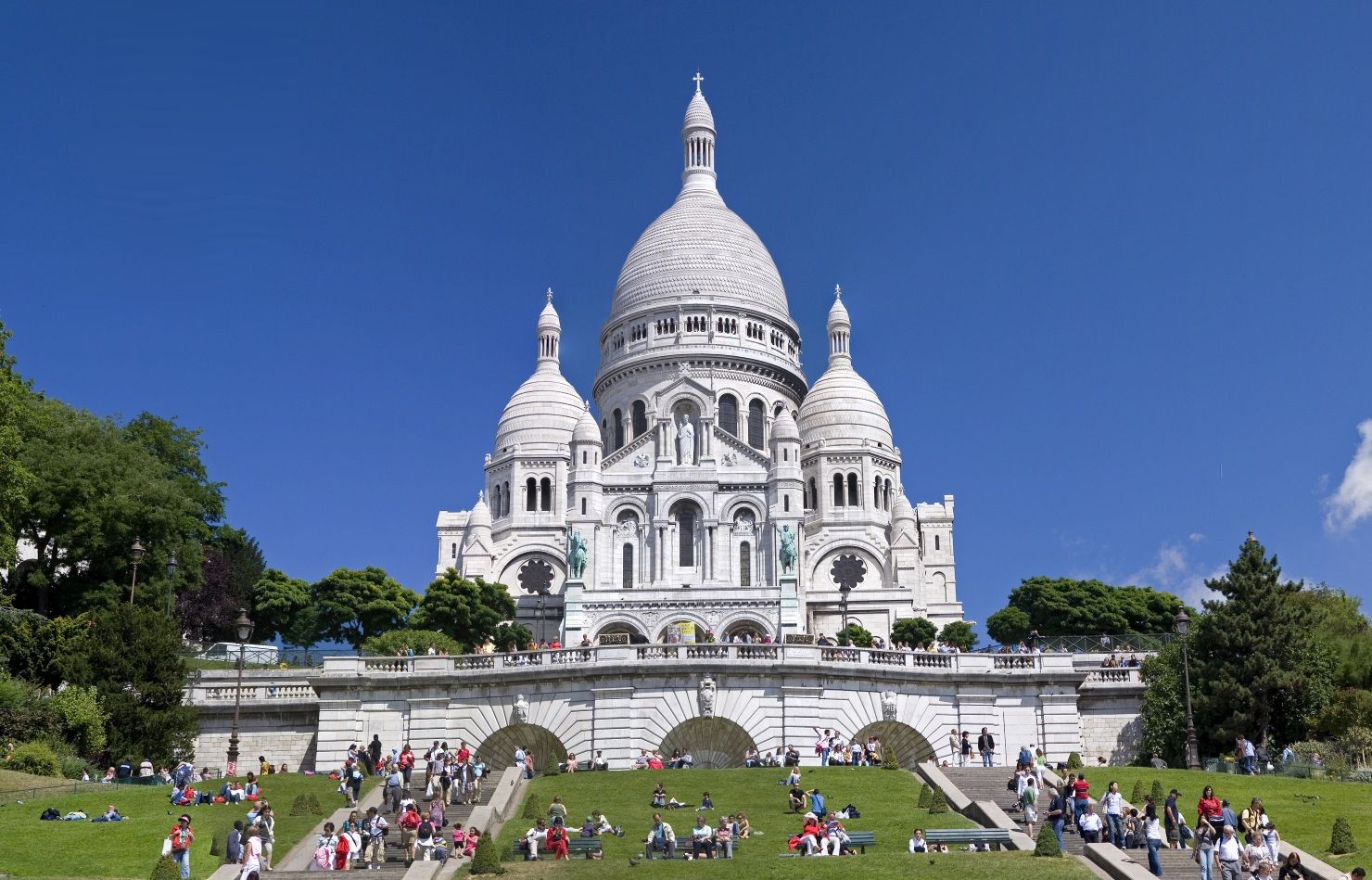



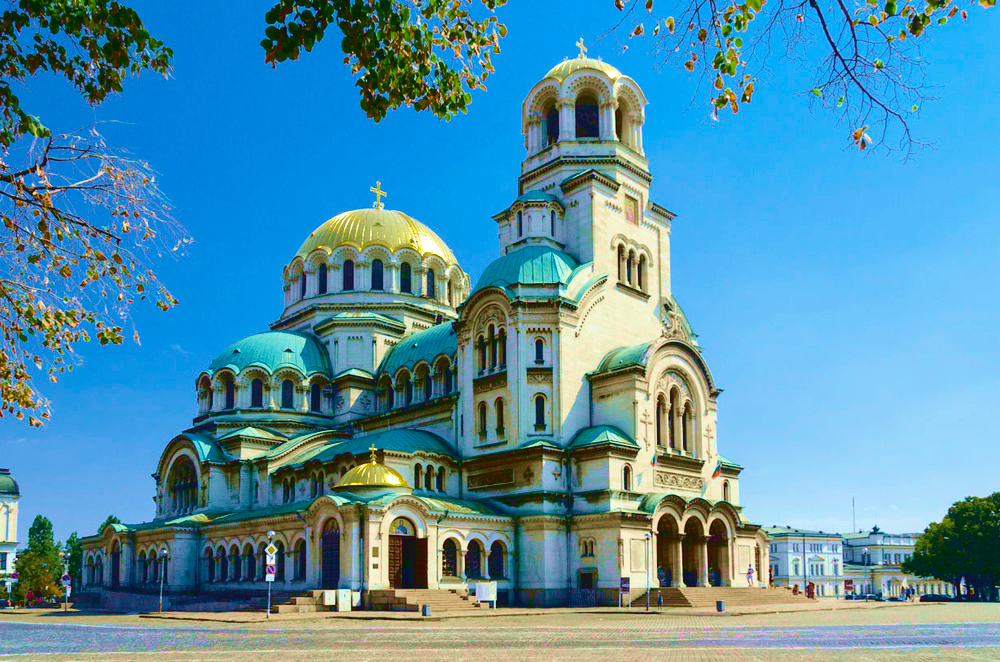
Die Alexander-Newski-Kathedrale (bulgarisch Храм-паметник „Свети Александър Невски“ Chram-pametnik „Sweti Aleksandar Newski“) ist eine orthodoxe Kathedrale in der bulgarischen Hauptstadt Sofia. Der neobyzantinische Sakralbau wurde 1882 bis 1912 im Auftrag von Alexander I. nach Entwurf von Alexander Pomeranzew errichtet. Sie ist Sitz der Bulgarisch-Orthodoxen Kirche und eine der größten orthodoxen Kathedralen der Welt.
亚历山大·涅夫斯基主教座堂(保加利亚语:Храм-паметник „Свети Александър Невски, Hram-pametnik „Sveti Aleksandar Nevski)是一座位于保加利亚首都索非亚保加利亚正教会的大教堂。该教堂为新拜占庭式建筑,是保加利亚主教的主座教堂,也是东正教在世界上最大的教堂之一,还是索非亚的象征之一以及主要的游览景点。 [1][2] 亚历山大·涅夫斯基大教堂占地面积为3170平方米,能容纳1万人。[1]它是巴尔干半岛最大的教堂。

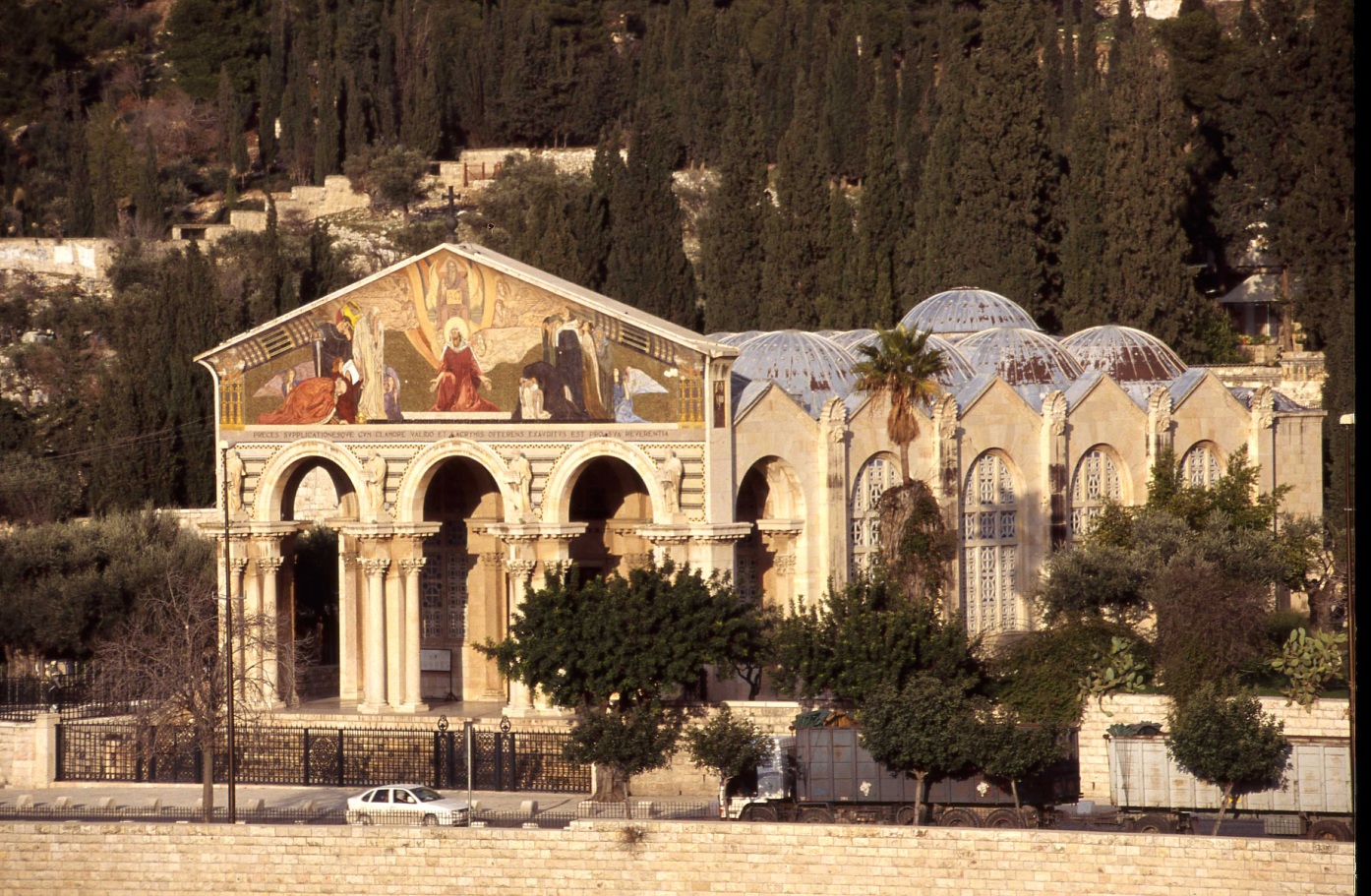
Die Kirche aller Nationen (lat. Basilica Agoniae Domini; auch Kirche der Nationen oder Todesangstbasilika) ist ein römisch-katholischer Sakralbau im Garten Getsemani am Fuße des Ölbergs in Jerusalem und gehört zum Lateinischen Patriarchat von Jerusalem.
Nach Matthäus 26,36–46 EU und Markus 14,25–42 EU hat Jesus von Nazareth an dieser Stelle im Bewusstsein des Bevorstehenden gebetet, bevor er von Judas Iskariot verraten wurde. Besonders bezieht sich die Kirche auf die nur bei dem Evangelisten Lukas 22,44 EU überlieferte Stelle: „Und er betete in seiner Angst noch inständiger und sein Schweiß war wie Blut, das auf die Erde tropfte.“ Dieses Blutschwitzen wird als Hinweis auf die Todesangst Jesu und sein auch menschliches Wesen angesehen.
Die Kirche wurde zwischen 1919 und 1924 mit Geldern aus zwölf Ländern erbaut. Daher rührt auch der Name Kirche der Nationen.[2] Das Wappen jedes der beteiligten Länder ist in einer eigenen Sektion an der Decke der Kirche zu finden. Die dreischiffige Kirche hat die klassische Basilika-Form ohne Turm, aber zwölf Kuppeln, die für die zwölf Apostel stehen, die von sechs rotbraunen Säulen als Symbol für die Ölbäume getragen werden.[3] Der Innenraum ist passend zum Thema Todesangst verhältnismäßig düster. Der Altar steht vor dem Felsen, auf dem Jesus gebetet haben soll, und ist mit einem Gitter umgeben, das an die Dornenkrone erinnert.
Die heutige Kirche steht auf den Fundamenten einer byzantinischen Basilika aus dem 4. Jahrhundert, erbaut durch Kaiser Theodosius I., die im Jahre 746 bei einem Erdbeben zerstört wurde, und einer Kreuzfahrerkirche aus dem 12. Jahrhundert, die 1345 zerstört wurde. Teile des ursprünglichen Fußbodens sind noch heute in der Kirche sichtbar.
万国教堂(Church of All Nations),又名Agony教堂,位于耶路撒冷城东部的橄榄山,毗邻客西马尼园。 耶稣在被捕前晚间祷告的地方,万国教堂是世界上四大著名教堂之一。耶稣在被捕前晚间在此祷告,听到神告诉他只能活七天的地方,而内部也有供奉当初耶稣祷告时所坐的石头。 教堂外观上方的马赛克镶嵌画中间红衣服的是耶稣,而他张开双臂代表着在最后七天的生命努力作好上方的主交办他的事项,而主身上的记号则代表起源或结束都来自于主,两旁的信众一边是相信耶稣会带给他希望,另一边则是怀疑他的人民,但最终、两边都会相信他的。 教堂本身在建筑的同时,有发现基底有拜占庭时代遗留下来的遗迹,所以当初建筑教堂的设计师保留原遗迹的马赛克拼贴花式,将教堂完成。 这座教堂建于1919年到1924年,得到许多不同国家的资助(因而得名)。每个国家的标志放置于天花板的玻璃上,每一个都放在一个小dome. 教堂的前面有一排列柱,教堂为拜占庭风格建筑,有圆顶、粗大的列柱和镶嵌图案。该教堂的建筑师是Antonio Barluzzi。
现存教堂时间在两座古代教堂的基础上-12世纪十字军教堂(1345年废弃)和4世纪的拜占庭教堂(毁于746年地震)。
The Church of All Nations, also known as the Church or Basilica of the Agony, is a Roman Catholic church located on the Mount of Olives in Jerusalem, next to the Garden of Gethsemane. It enshrines a section of bedrock where Jesus is said to have prayed before his arrest. (Mark 14:32-42) The current church rests on the foundations of two earlier ones, that of a small 12th century Crusader chapel abandoned in 1345, and a 4th-century Byzantine basilica, destroyed by an earthquake in 746. In 1920, during work on the foundations, a column was found two meters beneath the floor of the medieval crusader chapel. Fragments of a magnificent mosaic were also found. Following this discovery the architect immediately removed the new foundations and began excavations of the earlier church. After the remains of the Byzantine era church were fully excavated plans for the new church were altered and work continued on the current basilica from April 19, 1922 until June 1924 when it was consecrated.
L’église de Toutes-les-Nations (également appelée basilique de l’Agonie, Basilica Agoniæ Domini) est une église catholique située au pied du mont des Oliviers à Jérusalem, au lieu-dit « Gethsémani ». Construite de 1922 à 1924, elle renferme le rocher au pied duquel, selon la tradition, Jésus pria durant son agonie, avant son arrestation (Luc 22 :41)
La chiesa di tutte le Nazioni è una chiesa di Gerusalemme, posta sul monte degli Ulivi, in quello che la tradizione riconosce come il Getsemani.
Essa è costruita sul luogo dove, a partire dal IV secolo, esisteva un luogo di culto bizantino, trasformato poi dai crociati in basilica, andata in rovina con la definitiva occupazione islamica.
Il nome della chiesa ricorda il contributo di numerosi paesi alla sua costruzione, avvenuta tra il 1919 ed il 1924 ad opera dell'architetto italiano Antonio Barluzzi. La chiesa è conosciuta anche come chiesa dell'agonia in riferimento alla notte che Gesù vi trascorse alla vigilia del suo arresto. In essa sono armoniosamente fusi assieme elementi architettonici tipici delle basiliche cristiane (per esempio la facciata) con tratti tipici degli edifici islamici (per esempio la copertura caratterizzata da numerose piccole cupole).
La Basílica de Getsemaní, también conocida como Basílica de las Naciones o de la Agonía, es un templo católico situado en el Monte de los Olivos de Jerusalén, junto al jardín de Getsemaní. En su interior se encuentra la porción de roca en la que, según la tradición, Jesús oró la noche de su arresto, después de celebrar la Última Cena.1
La basílica descansa sobre los cimientos de dos templos anteriores, una basílica bizantina del siglo IV, destruida por un terremoto en el año 746 y una capilla cruzada del siglo XII, abandonada en 1345.23 Las obras del edificio actual, diseñado por el arquitecto Antonio Barluzzi,1 se llevaron a cabo entre 1919 y 19244 empleando fondos provenientes de distintos países (de ahí su apelativo de las naciones), cuyos símbolos aparecen en los mosaicos del techo en recuerdo de su contribución en la construcción.1El frontal de la iglesia es una fachada de estilo neobizantino, con una serie de pilares. Como remate, un mosaico mostrando simbólicamente a Jesucristo como enlace entre Dios y la humanidad. El techo en forma de burbujas, los pilares anchos y el mosaico refuerzan la apariencia arquitectónica bizantina de la iglesia.
La basílica se encuentra regida por la Custodia de Tierra Santa de la Orden Franciscana, que en un gesto de ecumenismo, también permite a la comunidad anglicana utilizar un altar en el huerto de Getsemaní para celebrar sus servicios de Jueves Santo.2
Церковь Всех Наций или Бази́ли́ка Аго́нии Госпо́дней (лат. Basilica Agoniae Domini) — францисканский католический храм в Гефсиманском саду, построенный на том месте, где, согласно преданию, Иисус Христос совершил Моление о чаше (Мк. 14:32-42) в последнюю ночь перед арестом. Церковь освящена в честь Страстей (Страданий) Господних.
Расположена у подножия Елеонской горы в Восточном Иерусалиме.
Церковь сооружена в 1924 году на месте более ранних церквей по проекту итальянского архитектора Антонио Барлуцци на деньги католиков 12 стран мира (Аргентина, Бельгия, Бразилия, Канада, Чили, Великобритания, Франция, Германия, Италия, Мексика, Испания и США), в честь чего и получила своё популярное название — церковь Всех наций[1]. В честь этих стран церковь имеет 12 куполов[2].
Камень, на котором, по преданию, Иисус Христос совершил Моление о чаше расположен в алтаре церкви и окружен железной кованной оградой в виде терновых венцов (подарок Австралии).
Снаружи к церкви примыкает камень, на котором находится вырезанное из камня изображение молящегося Христа[3].
Поскольку церковь принадлежит католикам, то прочие христианские конфессии для служб в Гефсиманском саду используют открытый алтарь, расположенный около храма.



 Ile-de-France
Ile-de-France
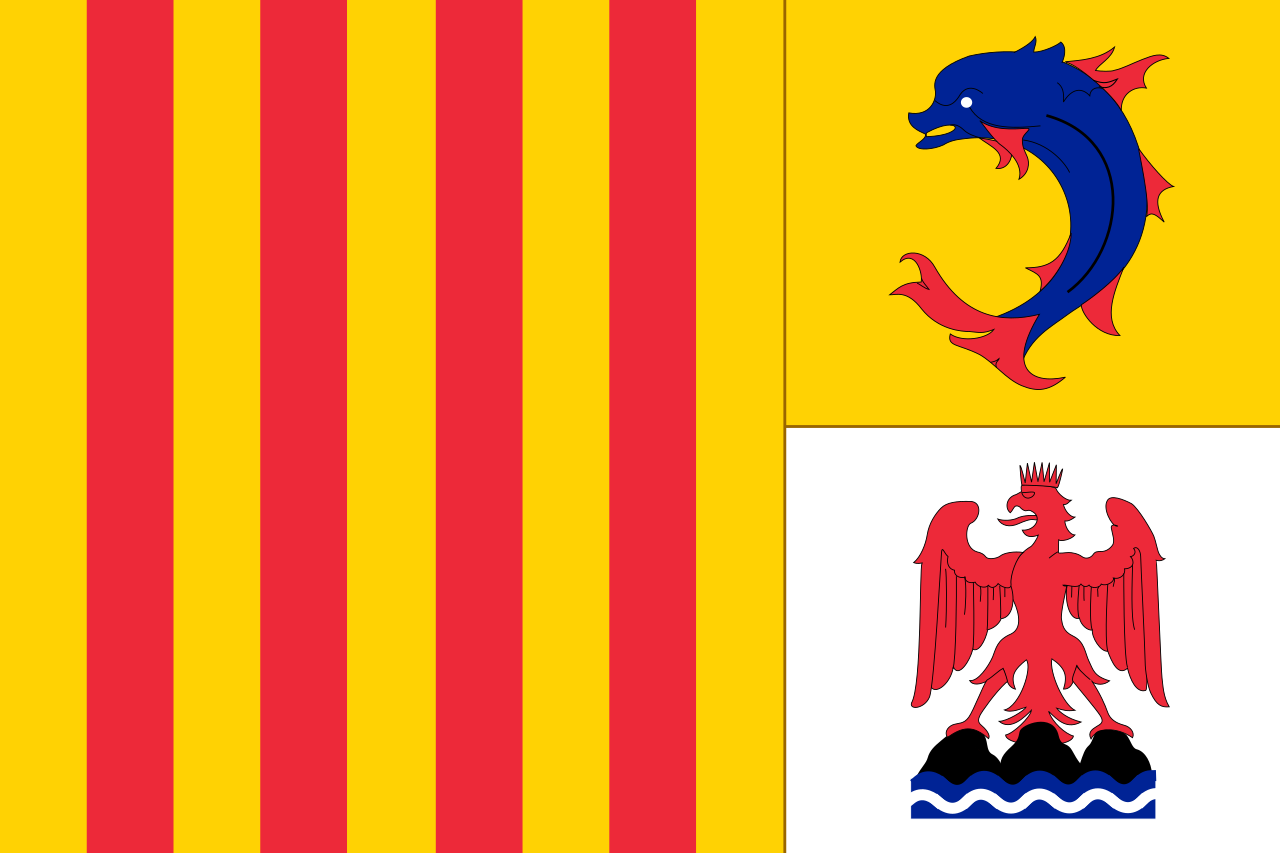 Provence-Alpes-Côte d´Azur
Provence-Alpes-Côte d´Azur
 California-CA
California-CA
 Urlaub und Reisen
Urlaub und Reisen